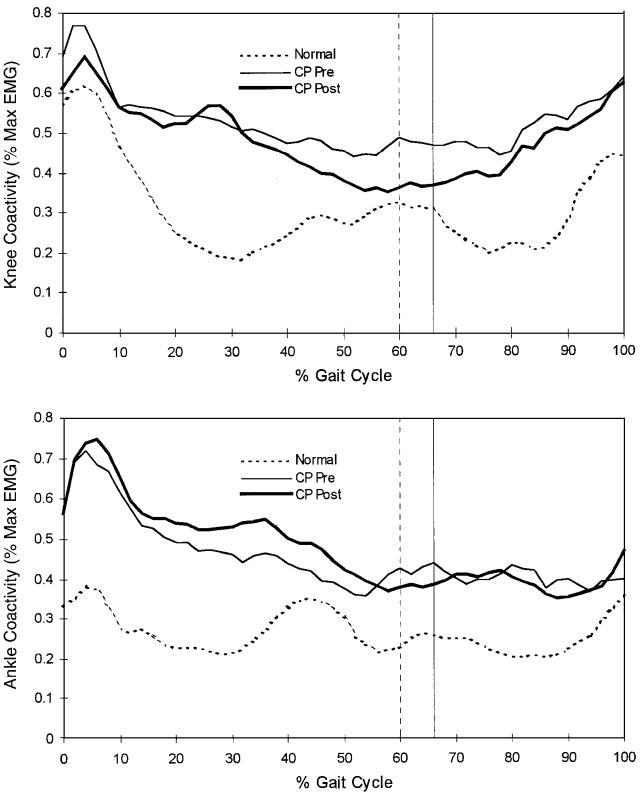Fig. 4.
Muscle coactivity quantified about the knee (quadriceps femoris versus hamstrings) and ankle (gastrocnemius versus tibialis anterior). Coactivity represents the fraction of antagonistic activity comprising the total activity of the system, scaled relative to the agonist level. The agonist and antagonist were defined as the most active and the least active muscles, respectively. Coactivity in the patients with spastic cerebral palsy (CP) was significantly greater than that in normally developing subjects (dotted line) both before (thin line) and after (heavy line) muscle-tendon lengthening. The vertical lines represent the time of toe-off for the normally developing subjects (dashed line) and for the patients with spastic cerebral palsy (solid line).

